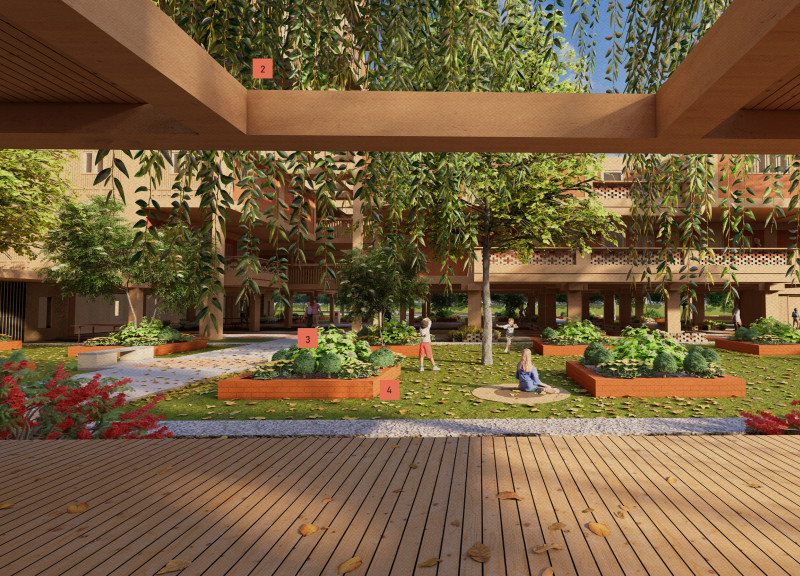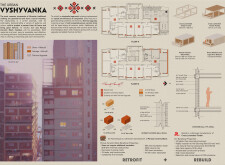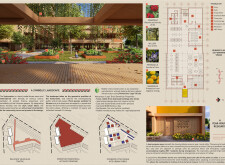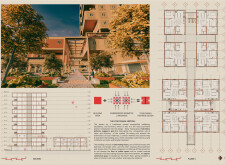5 key facts about this project
### Overview
The Urban Vyshyvanka project is located in an urban context that seeks to reinterpret traditional Ukrainian design, particularly the Vyshyvanka blouse, known for its intricate embroidery that signifies cultural heritage. The design integrates these motifs into a modern urban environment with a focus on community resilience, functionality, and sustainable practices. This initiative aims to revitalize existing urban blocks while promoting environmental accountability and celebrating local craftsmanship.
### Spatial Strategy and Community Engagement
The design implements a community-centric architecture that intertwines private residences with shared spaces across multiple levels. This arrangement fosters social interaction through communal gardens and co-working areas, each equipped with facilities that facilitate engagement among residents. The layout emphasizes accessibility, featuring open stairwells that enhance visibility and encourage movement. Vertical geometric patterns reflect the decorative elements of Vyshyvanka, serving not only as an artistic expression but also as a guide for spatial organization.
Landscaped areas and green roofs are incorporated throughout the project, contributing to improved living conditions and biodiversity. Thoughtful consideration of traffic flow and connectivity promotes pedestrian pathways, activating the ground plane and enhancing overall urban experience. This deliberate integration ensures that historical sites are seamlessly linked with modern amenities, enriching the cultural landscape of the area.
### Material Selection and Sustainability
The project prioritizes sustainability through its choice of materials, emphasizing local sourcing and ecological integrity. Notable materials include Cross Laminated Timber (CLT) for its lightweight yet strong structural capabilities, and porous ceramic blocks that provide natural thermal regulation and fire resistance. The use of mortarless 'Lego' bricks facilitates rapid construction and the innovative repurposing of materials. Energy-efficient fiberglass windows and natural timber decking further enhance functionality and aesthetic harmony with the surrounding landscape.
Additionally, the selection of native plant species contributes to local biodiversity while maintaining aesthetic continuity. The materials and their applications underline a commitment to environmental sustainability, ensuring that the project not only supports current needs but also respects and enriches its ecological context.






















































